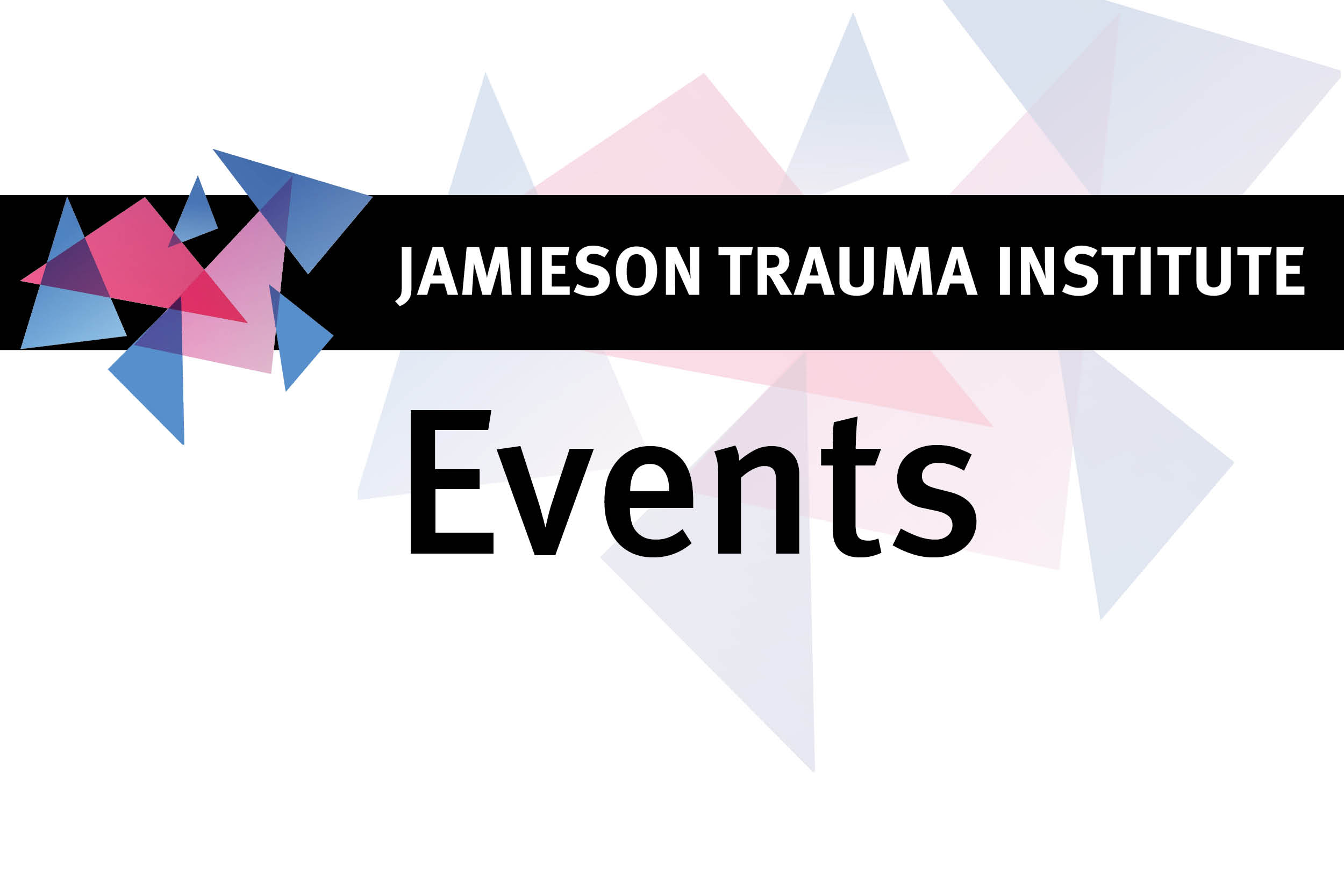
JTI Newsletter – February 2025
Welcome
Happy new year!
We hope that you had a good break, spending time with your loved ones and recharging your batteries for the new year.
These recent weeks have been a busy period for JTI, full of kick-off meetings for exciting new projects. These projects will focus on addressing trauma and its effects, with a clear plan for implementation, and they represent our mission for quality improvement and a genuine zest for collaboration. Some of these projects are the product of extensive partnerships, like the Navigating Injured patient Journeys through Emergency care to Recovery (NINJER) project, which will develop an injury atlas intelligence platform to integrate data systems across the care continuum, or the Rehabilitation Innovation and Technology Assessment (RITA) service, a collaborative program to integrate rehabilitation technology and innovation in models of care.
Other projects will focus on specific injuries that represent a significant burden to the patient, as well as to the healthcare and compensation systems, with the goal to mitigate the impact and improve quality of care. They are an examination of the impact of pelvic trauma to gain system and patient insights and develop implementable solutions, and a review of the management of open tibia fractures to prevent fracture related infection, through improved clinical care and state-of-the-art treatment options.
Another project will develop an enhanced version of STOP THE BLEED® haemorrhage control training, adapted to the Australian context, and will evaluate the new training materials in a randomised control simulation study.
All of these projects will involve consumers and stakeholders to guarantee meaningful deliverables. We are thankful to the Motor Accident Insurance Commission for funding these projects through the Innovation Research Action Awards program.
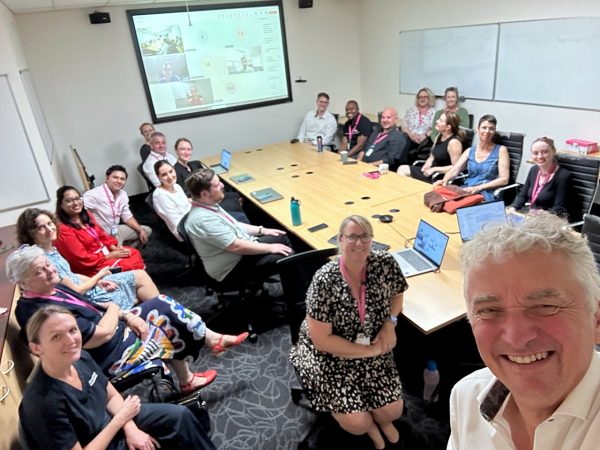
Professor Vivienne Tippett conducts JTI review

Prof Vivienne Tippett
As you may know, Adjunct Professor Vivienne Tippett PhD, OAM has been commissioned to Review JTI’s activities over the next six months. Professor Tippett has extensive experience as a health services consultant to Commonwealth, State and Territory governments as well as individual organisations. She has had a research and operational interest in trauma management in the State for over 20 years and recently retired as the Acting Head of the School of Clinical Sciences at QUT. As JTI moves beyond its initial start-up phase and into its next development iteration, it is important that we explore opportunities to improve our services and sustainability into the next decade. The Review will build on the excellent work commenced at our last Strategic Planning Day and will cover other aspects of our management structure and operational plan. In addition, the Review will consider funder and stakeholder expectations and assess the Institutes communications, internal and external visibility and reputation. I encourage you to engage with the Review and to take this opportunity to help to build a strong and sustainable future for JTI.
Rebekah Young selected to be the new RBWH Trauma Service Fellow in collaboration with JTI

Dr Rebekah Young
Dr Rebekah Young is a General Surgeon trained in Melbourne. She is completing her first year of the PFET Trauma Surgery Fellowship at the Royal Brisbane and Women’s Hospital in 2025 and will be working with JTI as part of her placement. Rebekah’s research background includes clinical research in sarcoma and public health research in disability based in India. She has just completed her Masters of Global Challenges through the University of Edinburgh and has a keen interest in health systems. She plans to spend her time at JTI working to improve rural and remote trauma management systems.
Using wearables to track weight bearing after ankle fracture surgery
The Jamieson Trauma Institute have collaborated closely with the Wesley Research Institute to design and support a Wesley Hospital based study utilising moonboots which have been fitted with a weight bearing sensor. The modified boots are fitted to patients who have sustained an ankle fracture and required surgery and have the ability to record how much, and for how long, weight is placed upon the injured ankle.
There is currently no standard, evidence based consensus on whether and when patients should weight bear following such an injury, nor any way to ascertain whether patients’ recall of their weight bearing activities are necessarily accurate recollections. This pilot study offers an exciting opportunity to record this information and correlate weight bearing activities with the healing process. Results may support expansion possibilities for larger studies, such as a randomised controlled trial.
The sensor that is being used in this study is the XBEACON device, manufactured by BIO Medical AG in Switzerland. These photos demonstrate how seamlessly the sensor can be fitted into a moonboot or training shoe and once installed it is maintenance free, the battery lasts for at least three months without any need to recharge it. The weight bearing data is uploaded to a smartphone via a dedicated app.
Patient recruitment commenced in January 2025 and two patients have been enrolled to date. This pilot study aims to recruit 12 patients and JTI has been delighted to be able to provide expertise to support this exciting study.
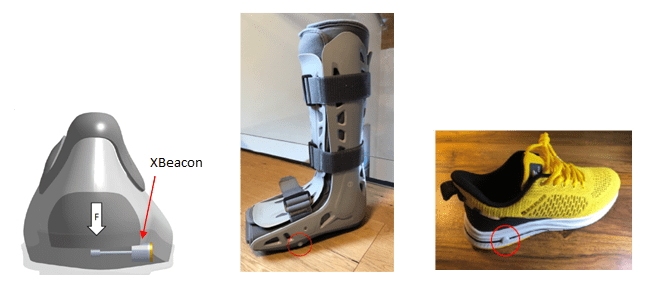
Details of the wearables being piloted at the Wesley Hospital
JTI researchers investigate co-production with community in injury research
Historically, research was undertaken by Western researchers, positioning Aboriginal and Torres Strait Islander persons as the subjects, however, it has been acknowledged this has been harmful and created damaging narratives. Co-producing research better offers opportunities for collaboration while improving research methodologies and outcomes for the community. Co-production, much like consumer engagement, involves undertaking research with persons from the community to provide insight and meaningfulness to goals, methods, and outcomes. Our Health Information Manager Genevieve Westacott, in collaboration with the Metro North Cultural Capability team, undertook a scoping review to see how different co-production methods were used across injury research. Integrating identified persons on the writing and research team was the top method used by the included studies, and the findings showed that there is a general increase in the use of co-production in injury research across time.
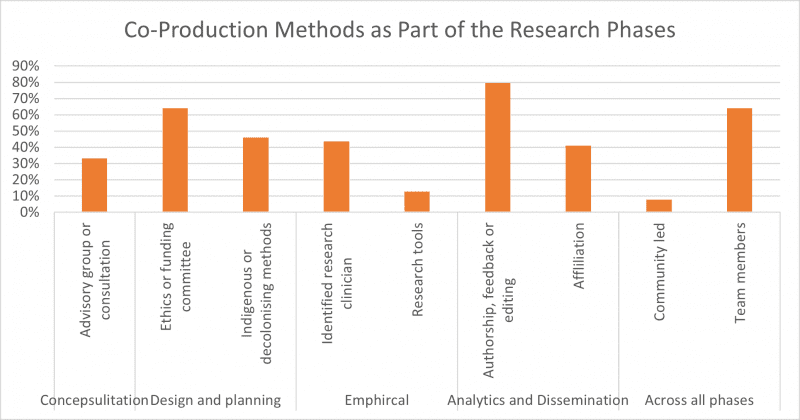
Graph showing the different methods used by studies for the integration of identified persons
Did you know…?
Did you miss the last JTI Showcase Event or the Ken Jamieson Lecture? Do you want to learn more about our key projects? Visit the JTI Digital Hub, hosted on the QUT MediaHub platform, where our videos, presentations and events are available for public viewing.
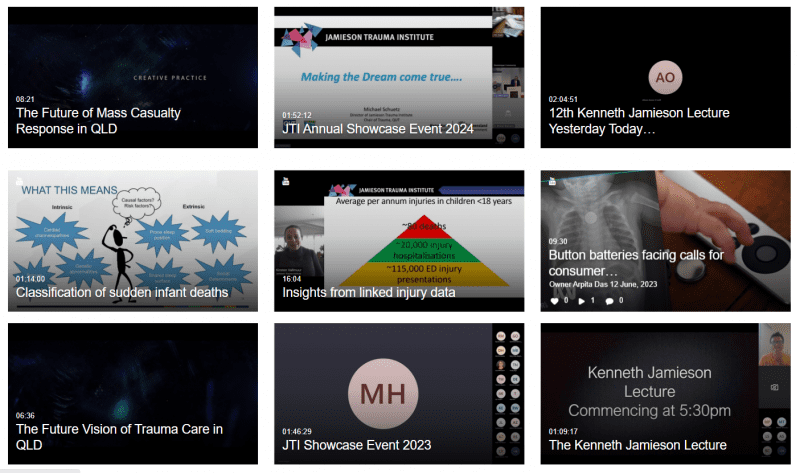
JTI Digital Hub

